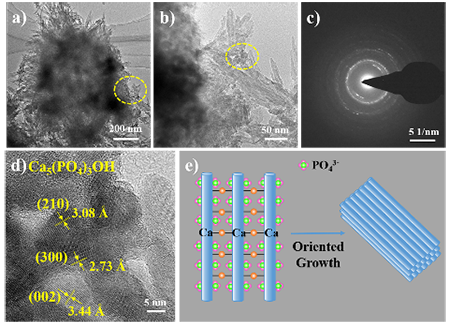A Self-growing Porous Calcium-based Adsorbent Derived
from Biowaste for Efficient Wastewater Purification
LIN Liang and ZHUANG Zan-Yong*
Chin. J. Struct. Chem. 2021, 40, 1328-1336 DOI: 10.14102/j.cnki.0254-5861.2011-3173
October 15, 2021
self-growing model, high adsorption capacity, biowaste, porous materials, wastewater purifications
ABSTRACT
Traditional adsorbents are normally suffered
from a low adsorption capacity that has a finite saturated adsorption capacity. We reported herein a hierarchical self-growing porous calcium silicate
hydrate (CSH) that uses biowaste as the precursor and is highly efficient in
wastewater purification. In the process of phosphorus removal, CSH can react with
phosphorus in water and grow into the hydroxyapatite (HAP). The generation of
HAP further increases the active sites while maintains the porous structure of pristine
CSH. Subsequently, the HAP could conduct the efficient extraction
of Pb2+ from wastewater based on the ion exchange between Ca2+ and Pb2+. Clearly, the CSH structure has self-growing
structure using the pollutants as the building
blocks, not only achieving high adsorption capacity
for pollutants, but also maintaining the hierarchically porous structure that supports the high efficiency in the next
cycling. We provide here an intriguing pathway to tackle
bottleneck of the traditional adsorbents, i.e., a finite saturated adsorption capacity.








